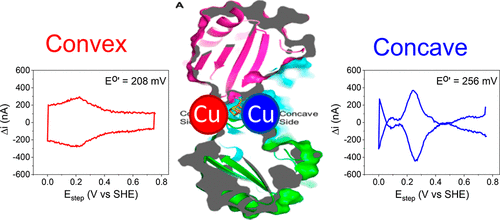当前位置:
X-MOL 学术
›
ACS Appl. Bio Mater.
›
论文详情
Our official English website, www.x-mol.net, welcomes your
feedback! (Note: you will need to create a separate account there.)
Redox Characterization of Electrode-Immobilized Bacterial Microcompartment Shell Proteins Engineered To Bind Metal Centers
ACS Applied Bio Materials ( IF 4.6 ) Pub Date : 2020-01-08 , DOI: 10.1021/acsabm.9b01023 Jefferson S Plegaria , Matthew D Yates 1 , Sarah M Glaven 1 , Cheryl A Kerfeld 2
ACS Applied Bio Materials ( IF 4.6 ) Pub Date : 2020-01-08 , DOI: 10.1021/acsabm.9b01023 Jefferson S Plegaria , Matthew D Yates 1 , Sarah M Glaven 1 , Cheryl A Kerfeld 2
Affiliation

|
Bacterial microcompartment (BMC) shells are modular, selectively permeable, nanoscale protein shells that self-assemble from hexagonal and pentagonal building blocks in vivo or in vitro. Natural and engineered BMC shells colocalize and concentrate catalysts and metabolites in their lumen, increasing reaction kinetics. Here, we describe the design and characterization of a shell protein (pseudohexameric/trimeric BMC-T1HO protein) engineered to coordinate a Cu ion in its pore. Several designs, each varying the position of an introduced coordinating histidine residue, were shown to maintain their trimeric oligomerization state upon Cu coordination via chemical denaturation experiments. We measured reversible redox activity from electrode-bound Cu-3His BMC-T1HO variants, with formal potential(s) that were dependent on the Cu coordination site within the discoidal shaped trimer (E°′ = +208 to +265 mV vs SHE). These results represent important steps toward expanding the functionality (Cu coordination) and applicability (redox activity on an electrode surface) of engineered BMC reactor architectures.
更新日期:2020-01-09









































 京公网安备 11010802027423号
京公网安备 11010802027423号